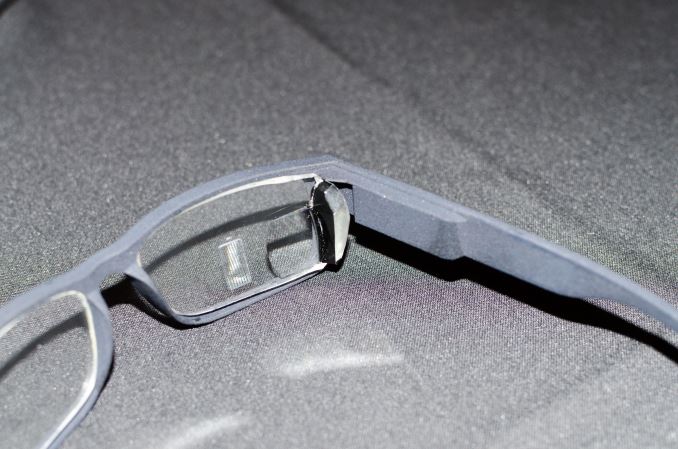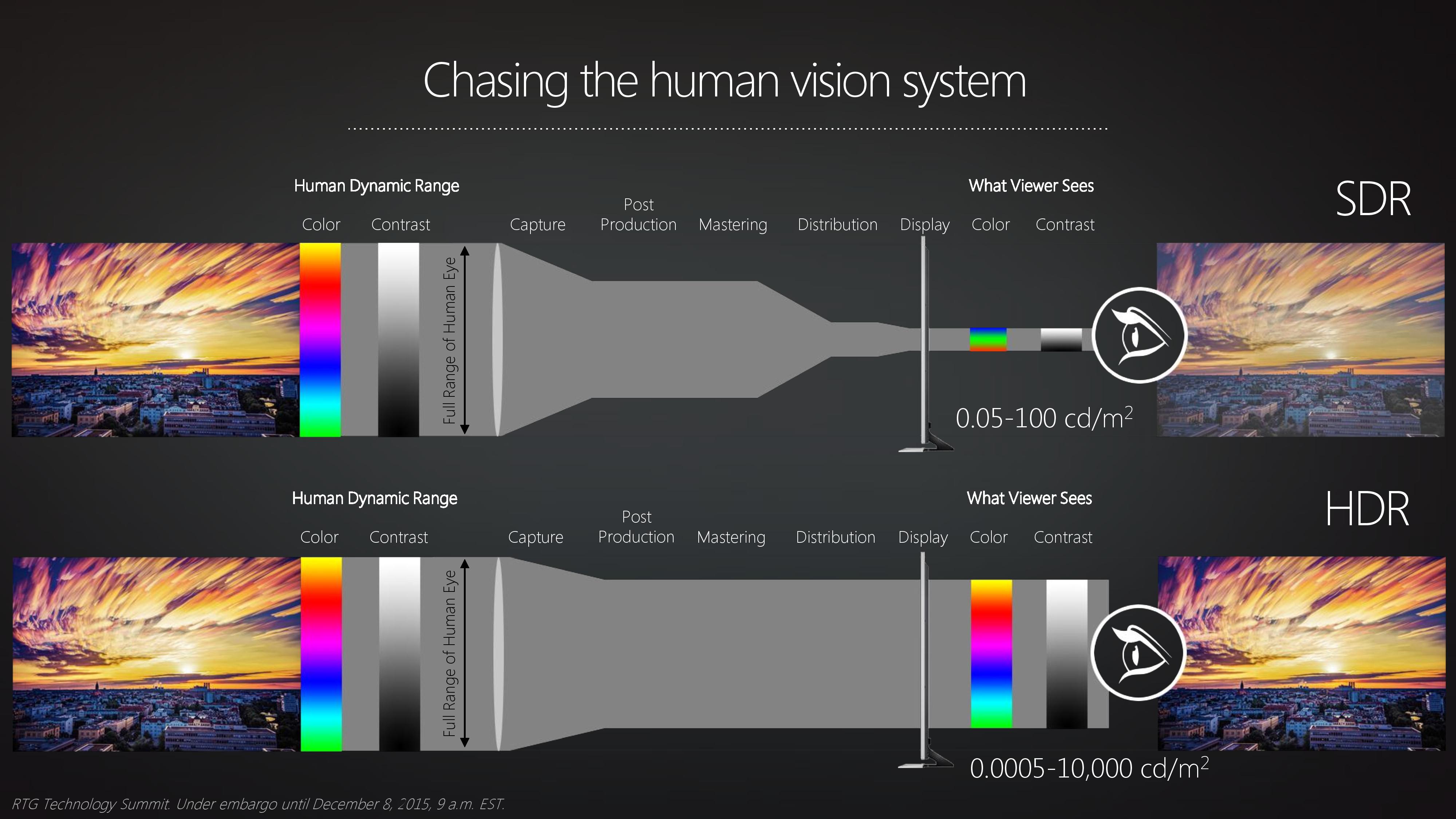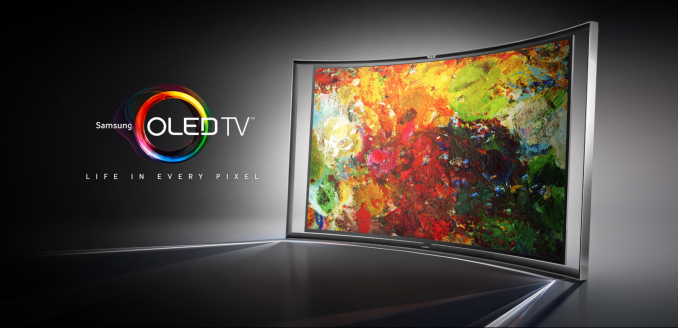CES 2016 Roundup: Total Editor Recall
by AnandTech Staff on January 26, 2016 11:00 AM EST- Posted in
- Trade Shows
- CES 2016
Mobile and Tablet Editor, Brandon Chester
This year’s CES was my second time attending the show. I was quite new to AnandTech during my first CES, and what I can say is that while this year seemed even bigger than last as far as the scale of the show goes, for me personally it felt much less frantic than last year. CES is an interesting event for me because there aren’t always many major announcements made which relate to new mobile products, but because of how prolific the smartphone has become most of the announcements tie in with the mobile world in some fashion.
One of the big pushes this year was VR. This isn’t unexpected, given that there are now many vendors trying to get involved with VR now that it appears that the category will be much bigger than the niche market some may have expected it to be in the early days of the Oculus Rift.
At CES, I was able to try the HTC Vive and the Gear VR. I wasn’t able to try the Oculus Rift, but everything I’ve heard from other people and read online says that the Vive is the best of these three major offerings. I have to admit that I was quite impressed by the demos for the Vive, and you can read a bit more about that here.
One of the barriers to adoption that I can see with the Vive will be the fact that setting up the lighthouse tracking stations requires a substantial amount of space, and I don’t think many users are going to have a room that they can dedicate to using for VR. In most cases, I expect that VR will end up being a way to increase immersion without requiring the user to move about any more than existing games require. Unfortunately, this won’t take full advantage of VR’s potential, but that’s just the truth of how most people want (or are able) to play games if we consider it a mass market venture.
As a mobile editor, the most interesting thing about VR is how much it owes to the advances in the smartphone market. The only reason any of these products exist in their current forms is because of the work to create small displays with higher and higher resolutions, along with the great advancements that have been made in the manufacturing of OLED displays. I don’t think the current VR headsets are where they need to be in this regard, as in my experience you need to move away from PenTile in order to avoid the chromatic aliasing and other artifacting that the current headsets have. The displays will eventually have to enter the realm of 4K and even 8K panels as well in order to have a high enough resolution to mimic how you would actually see the world. However, the fact that there are such high resolution OLED panels available right now is definitely the result of how that technology has advanced in order to be used in smartphones, and the display technology wouldn’t be where it needs to be for these first generation VR headsets if that had never occurred.
On the tablet side of things, I saw two notable tablet launches at the show this year. The first was Huawei’s MediaPad M2 10, which is a mid range Android tablet using the Kirin 930. More interesting was the launch of Samsung’s TabPro S. This announcement was a surprise to me, and even more surprising was the fact that Samsung had decided to go the Windows route with their 2-in-1 instead of using Android. Samsung may have realized that moving to a 2-in-1 can amplify the issues with Android tablets, and using Windows allows you to provide an experience that leans more toward a laptop, which is what I feel many 2-in-1 buyers are really looking for anyway.
Something absent from this year’s show were smartwatches. Part of this certainly has to do with how much of the market Apple has grabbed, coupled with the fact that they don’t attend the show. Even so, I was surprised to see very little promotion from other vendors and nothing in the way of new announcements. We did see new finishes for the Huawei Watch and Samsung Gear S2, but no completely new hardware. We might see more at MWC in February perhaps.
While smartwatches were missing in action, that isn’t to say that wearables themselves were missing from the show. Fitness trackers were shown off in multiple places, and head-mounted displays in a similar style as Google Glass were being shown off as well. Zeiss’s Smart Optics technology, for making discreet smart glasses, was definitely the most interesting thing going on in that category, despite the fact that it’s only a tech demo right now. I hope that they’re already in talks with companies to get this technology into future commercial products.
The last area that I ended up seeing a lot of at the show was television. In hindsight this is a bit surprising since I don’t even have a television or any sort of cable service, but I suppose that my interest in display technology played a part. There were two main things that happened in the TV space. The first is the adoption of wider color gamuts and support for HDR in the standards for UltraHD content.
Both of these are important, although I am very disappointed by the efforts of a group of companies to push DCI-P3 support into these specifications in addition to Rec. 2020 because their display technology isn’t capable of reproducing that color space entirely. I was able to see quantum dot panels this year that covered over 90% of the Rec. 2020 gamut, and the use of a second smaller gamut may cause problems down the line with input and output chains that don’t handle the color management for P3 content properly when displays move to Rec. 2020 displays. Consumers with newer Rec. 2020 displays might end up seeing oversaturated pictures, or owners of DCI-P3 panels may have to deal with under saturation of Rec. 2020 content.
The second thing I noticed about the TV space is the lack of advancement that OLED has seen. This is mainly due to Samsung’s choice to push LCD panels with quantum dots, which takes the largest OLED manufacturer out of the race. While they briefly took a step into the OLED TV market a few years ago, Samsung has just continued primarily as an LCD manufacturer since then.
There are a couple of important things to consider here. I haven’t yet seen an OLED panel approaching coverage of the Rec. 2020 gamut, which is part of the reason why DCI-P3 has been put into the UltraHD standards. This is conflicting becuase it’s a gamut for cinema use, and it now coexists with the Rec. 2020 gamut which will be used for UHDTV. OLED’s limited peak brightness also limits the range of bright shades for HDR content, but its black level allows for better detail with dark areas. Something to note is the fact that light incident upon the display will end up negating the advantages of OLED’s black levels due to reflections, so the black levels only provide an advantage with a proper environment to block out other light sources.
With these things in mind, it does make sense that Samsung is pushing in a different direction. When looking at the TV market, I don’t see OLED as becoming a complete successor to LCD, while I do expect it to do so in the mobile space. TVs often have static parts of the interface, and issues like burn in and emitter aging will be difficult to control. Improvement to emitter materials will allow for higher peak brightness and a greater color gamut, but it seems like OLED may be more of a stopgap technology rather than a long term play.
When looking strictly at the mobile market I don’t think there was a lot to be excited about from this year’s CES. Those sorts of announcements are usually reserved for MWC anyway, so it’s something to be expected. If you expand your view to the technology market as a whole, then I think you’ll see a lot of interesting things going on. I think VR is going to be big, even though the display technology isn’t where it needs to be yet. Early adopters will help drive further investment, which will drive technology improvements, and eventually prices will come down as well. I think head-mounted displays in general will also become more widely adopted in the future as technologies are created to implement them in more discreet ways, and I think Zeiss’s demo was a great example of how quickly things can move.
As for the display and TV market, I think the move to Rec. 2020 will be delayed as manufacturers ship DCI-P3 panels instead, and that’s quite unfortunate. HDR has the potential to greatly improve the dynamic range of video content, and it’ll be interesting to see which of the several proposals for HDR content encoding end up being adopted most widely. As for panel technology, I think LCD is going to stick around for longer than people think, and I think OLED will probably be something that exists in addition to LCDs rather than replacing them, with a future technology such as MicroLED eventually replacing both down the line. As always, technology keeps moving forward in many different ways.















44 Comments
View All Comments
Ian Cutress - Tuesday, January 26, 2016 - link
We got clarification from Mushkin. Initially they will be aiming for $0.25/GB, which makes the aim south of $1000. Going down another half is a long-term goal down the line, but it won't happen overnight. I've made an addition clarifying this.hojnikb - Wednesday, January 27, 2016 - link
Its gonna take some time for nand to come down to 0.12c/GB.This probably means 3D TLC nand. I doubt 2d nand can get that cheap for ssd use.
By the time nand will be cheap enough fro 500$/4tb, im sure someone will come up with a controller capable of adressing 4TB of flash (so no need for dual controllers+ raid).
nathanddrews - Wednesday, January 27, 2016 - link
In the words of Darth Vader, "NOOOoooooOOOOooOOOOO!"It was too good to be true. :-(
Dirk_Funk - Tuesday, January 26, 2016 - link
Totally irrelevant but is that an Xbone hdmi cord coming out of the MSI tower on the first page?nathanddrews - Tuesday, January 26, 2016 - link
"This reportedly kills random access performance, but Mushkin is expecting to be able to ship the 4TB model for a mere $500, which will greatly help it find a niche."4TB of NAND for $500. Just let that sink in a bit... So basically, they're slapping two decent 2TB SSDs behind a slower controller. Here's a similar device with the same JMicron controller:
http://amzn.com/B00ITJ7WDC
What sort of random IO "killing" is happening here? To what extent? I would expect a modern SSD with low random IO to still outperform a HDD by a significant margin, but some rough numbers to put it in perspective would help. This could be awesome for a speedy micro-NAS.
Ian Cutress - Tuesday, January 26, 2016 - link
If I recall correctly, we were told '10K IOPS'. Not sure if that's read or write, or if that was the 2TB version or the 4TB version. Billy might know, he was more awake for that meeting :)Billy Tallis - Tuesday, January 26, 2016 - link
10K IOPS sounds right, but I don't have any more context for that number.Since SM2246EN drives have steady-state random write IOPS of around 5k, that metric might actually not be hurt at all by the RAID overhead. But all the other random access numbers would be.
nathanddrews - Tuesday, January 26, 2016 - link
So what you're telling me is that apart from $$/GB, one of these would make for a significant improvement in IOPS over a HDD-based file server. Say no more. ;-)jasonelmore - Tuesday, January 26, 2016 - link
I don't agree with the consensus that VIVE is better than oculus. They are different systems for different use case scenarios.The Oculus Rift is much better at long gaming sessions at your desk, like playing star citizen, euro truck, all flight sims, etc... Due to its light weight and polished design. It can still track in a small playspace, but the controllers require a additional sensor. The Oculus controllers are amazing and groundbreaking IMO. It's to bad they weren't ready to ship with the CV1.
The Vive is meant to be a system for a large play area, like the Nintendo Wii. It's much heavier, and it needs a large area to do most of interactive stuff. The controllers are not as good as oculus's (general consensus of most testers), however the lighthouse's trackers are amazing and they really do push the envelope.
Most of the demo's i've seen in larger playspaces, show the users constantly doing cable management with their feet. Your mind is thinking about the cables subconsciously thus reducing immersion.
Both have similar display specs and performance specs. (1080p @ 90FPS X 2) but Oculus seems to have more exclusives. Good guy steam will support both headsets, but Oculus will have their own exclusive titles. Maybe HTC can sign some exclusive deals, but i just don't see steam requiring you to buy their HMD to play HL3.
HTC, Steam and Oculus, need to focus on getting rid of the cables. (Maybe a Li-Fi System would have the necessary bandwidth) Wireless freedom is much more important for HTC/Steam because of the larger playspaces. I would hold off on the VIVE version 1, and see if version 2.0 is any better. Oculus will be supported by SteamVR, so Steam's involvement shouldn't make you prefer it over the Oculus.
Finally, The VIVE has not been priced yet, and HTC is not a company that can afford to subsidize the hardware. Steam maybe, but not HTC. But we shall see. I'm afraid the VIVE is gonna cost $999 and up for the HMD, 2X controllers and 2X light house sensors.
Nintendo Maniac 64 - Tuesday, January 26, 2016 - link
Is Brandon Chester not aware that LG unveiled a new OLED TV line-up for 2016 that adds support for Dolby-Vision? That by definition is an advancement.